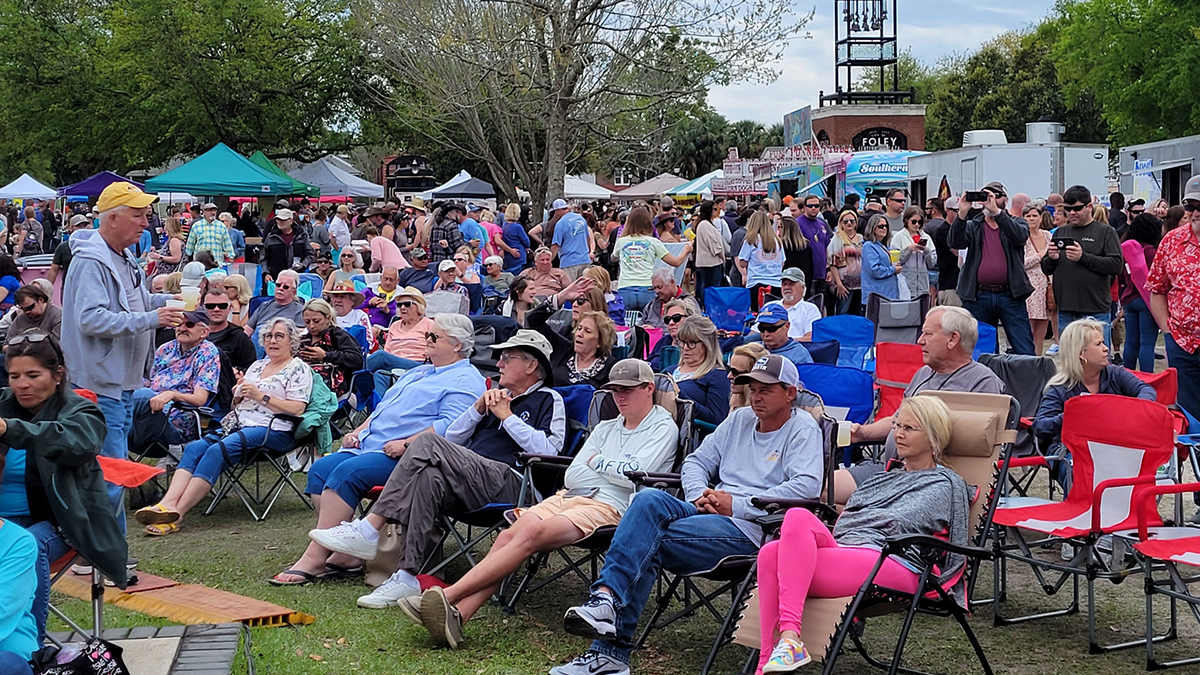Kiwanis Centennial Park connects Birmingham’s Vulcan to growing greenway network

Kiwanis Centennial Park, a new plaza just below Vulcan Park and Museum on Red Mountain, connects Vulcan Park to Vulcan Trail. (contributed)
For decades, Birmingham’s iconic iron man, Vulcan, and the nearby walking trail named for him were very close neighbors that didn’t quite connect.
On Tuesday, city officials, greenway supporters and leaders with the Kiwanis Club of Birmingham and the Vulcan Park and Museum gathered to applaud a major expansion to the park that will link one of the city’s biggest attractions to the scenic Vulcan Trail, which also has just been expanded.
The centerpiece of the project is Kiwanis Centennial Park, a new open plaza and event space just below the existing Vulcan Park and Museum grounds atop Red Mountain. It ties in to the Vulcan Trail, renamed the Kiwanis Vulcan Trail, which now extends 2.2 miles to the west to Green Springs Highway. The original trail was just 1 mile, following the path of the old Birmingham Mineral Railroad.
There’s a third component to the Kiwanis project: a multicolored light show to be projected onto Vulcan nightly. It is to be completed later this year.
The $5.8 million project was spearheaded by the Kiwanis Club of Birmingham in commemoration of the club’s centennial, celebrated last year. The Birmingham Kiwanis Club is the world’s largest, with more than 550 members.
The Kiwanians worked with Vulcan Park and with the nonprofit Freshwater Land Trust, which is working to extend and expand walking trails throughout Jefferson County, and to secure and preserve important lands for wildlife, water quality and recreation across north-central Alabama.
The Kiwanis Club has a historic connection to the iron man. Its members played a key role in moving the world’s largest iron statue to the top of Red Mountain from the Alabama State Fairgrounds in 1939. Much of the work of creating Vulcan Park at that time was funded through the Great Depression-era federal Works Progress Administration (WPA).
Also constructed through the WPA was a stone staircase that took visitors below the north ridge of the mountain, where they could catch the streetcar back to town, said Darlene Negrotto, president and CEO of Vulcan Park and Museum. But in the 1960s much of the stairs and path were torn out as part of a modernization project at the park, Negrotto said, severing the park’s pedestrian connection to the north side of the mountain.
Plans called for rebuilding the staircase during a restoration of Vulcan and the park that was completed in 2004, but a funding shortfall prevented it. Fourteen years later, visitors can now walk down the north ridge again, and take a stroll on the Vulcan Trail.
Greenway supporters envision the expanded Vulcan Trail as a key component in the expanding Red Rock Trail System, a 100-mile network of trails, bike paths and sidewalks across Jefferson County. Long-term plans call for expanding the network to 750 miles, connecting key parks and open spaces across the county, including Vulcan Park and Museum, Railroad Park, Red Mountain Park, the Birmingham Zoo, Birmingham Botanical Gardens, and Ruffner Mountain.
Walkers and bikers were already enjoying the expanded Vulcan Trail before the official opening Tuesday afternoon. Earlier in the day, representatives of the Freshwater Land Trust provided golf cart tours of the expanded trails, which link to recently constructed sidewalks on Green Springs Highway that offer pedestrians a safer route between Birmingham’s George Ward Park and west Homewood.
Meanwhile, the city of Birmingham is considering upgrades along Richard Arrington Boulevard to create a safer pedestrian and bicycling connection from the city’s southside neighborhoods to Vulcan Park and over Red Mountain to downtown Homewood. That project, tentatively named the Richard Arrington Vulcan Greenway, after the city’s former mayor, is in the planning stages.
















